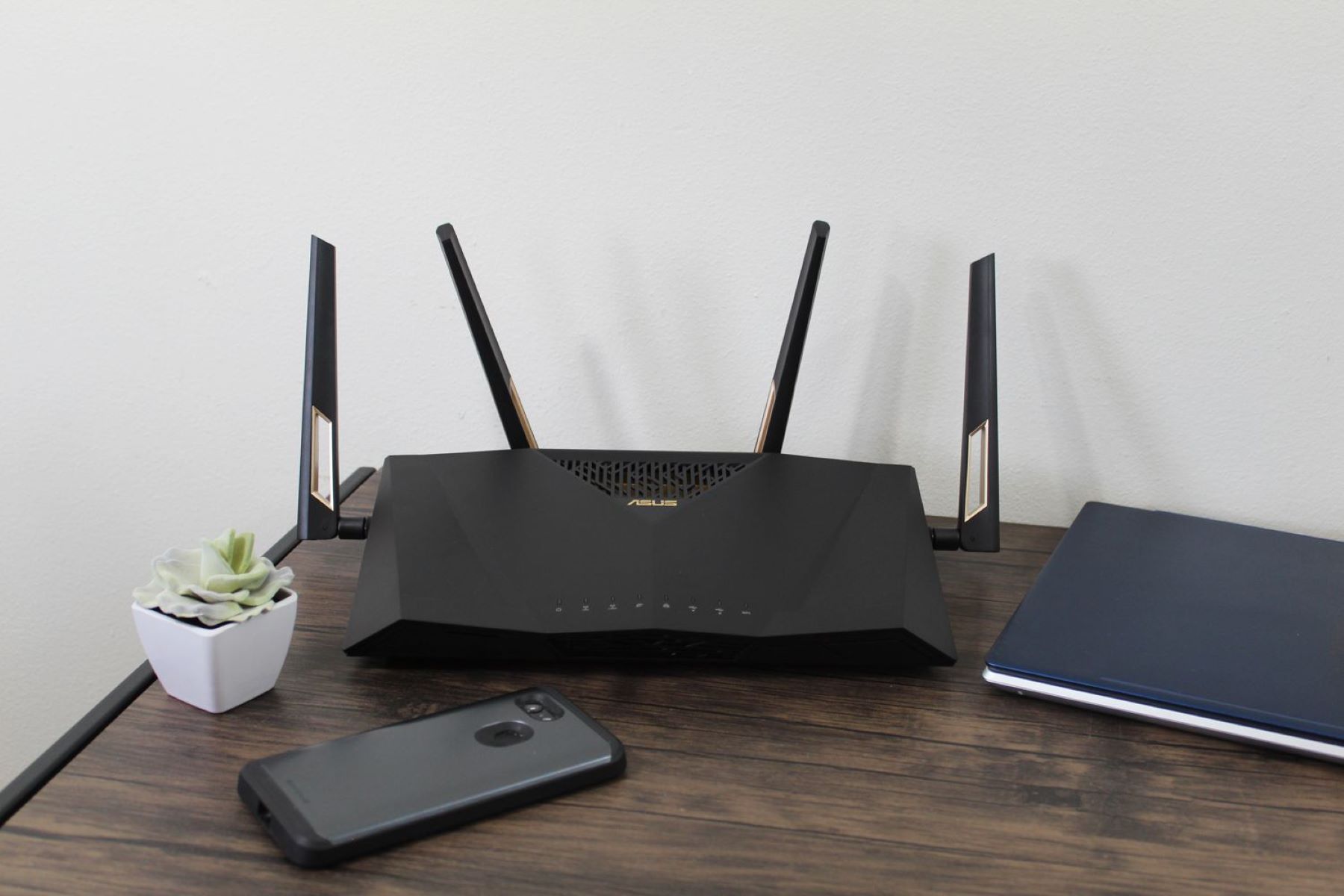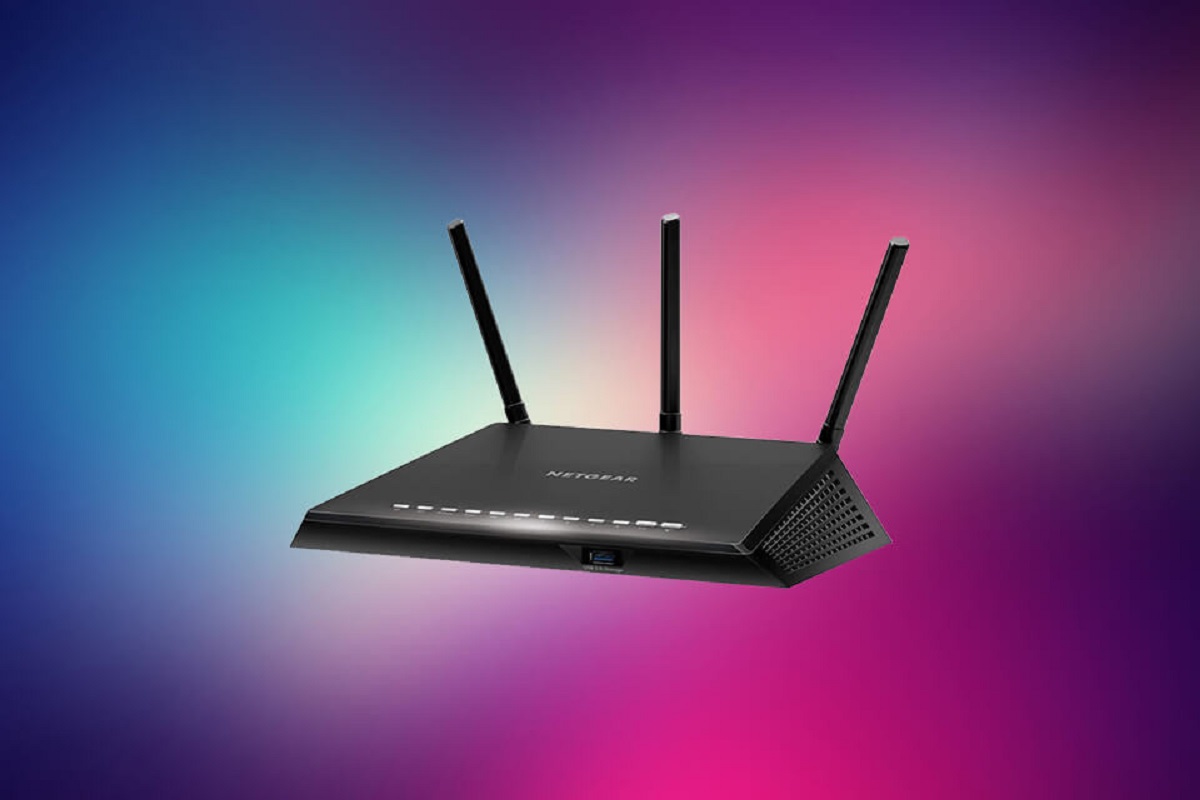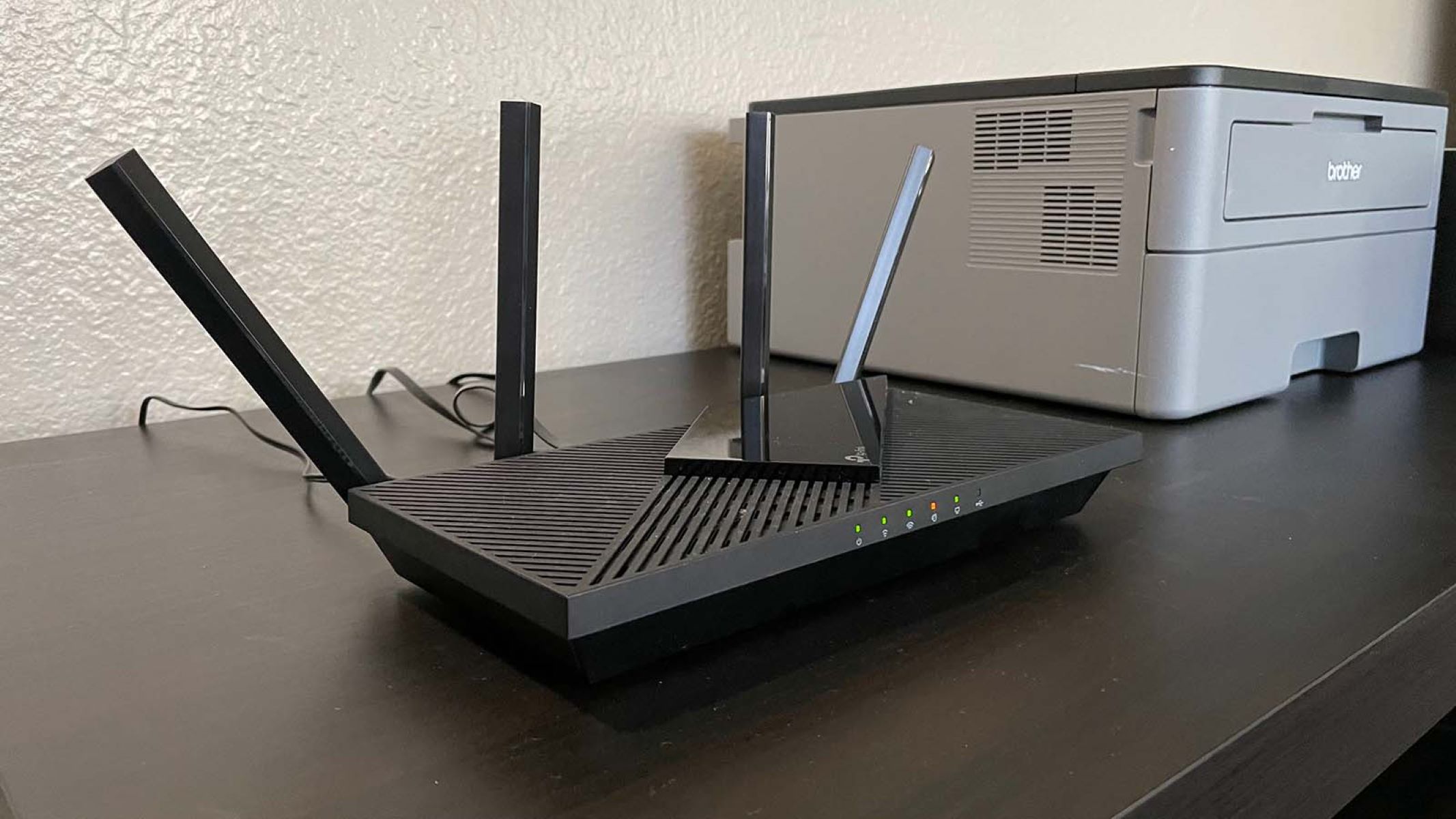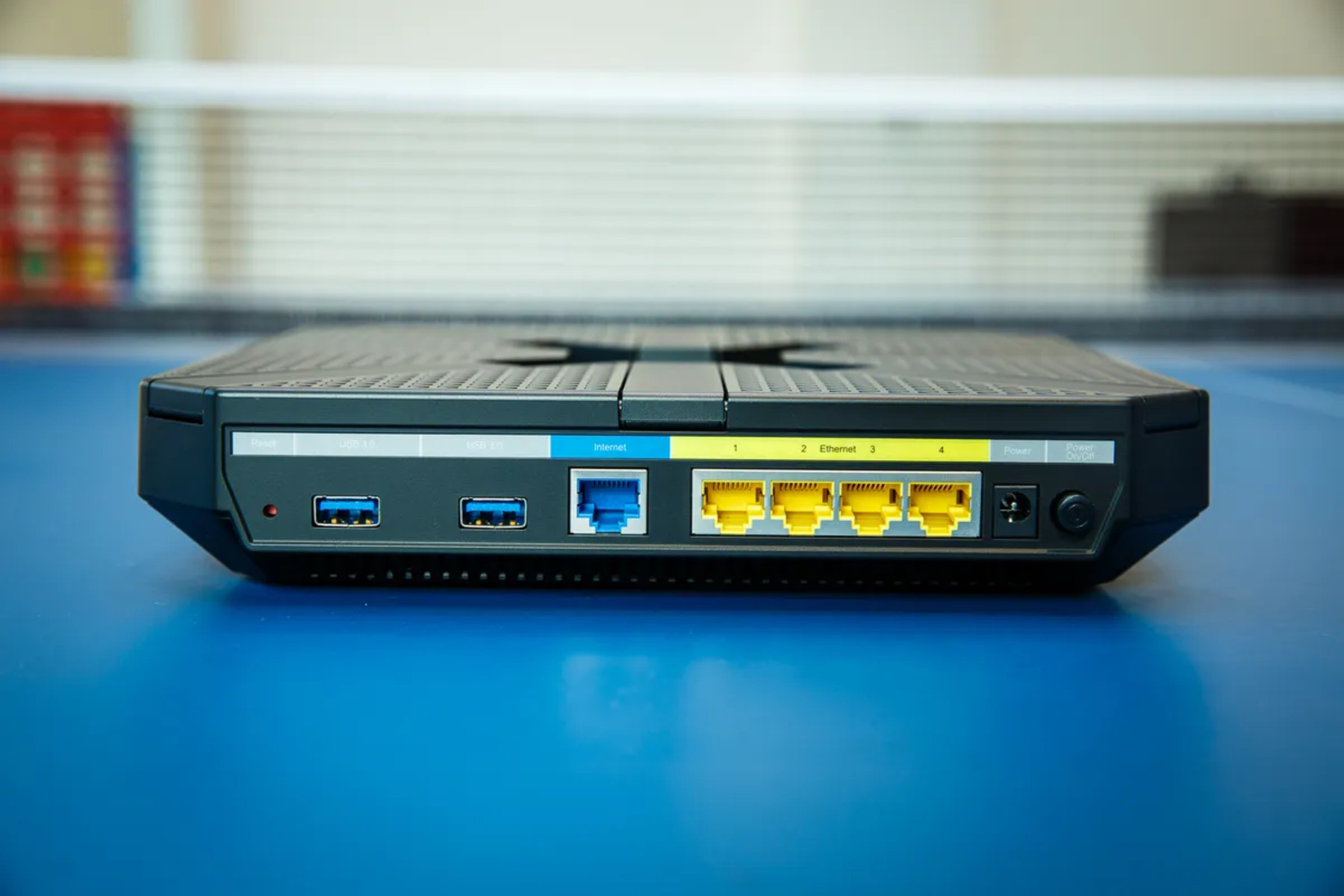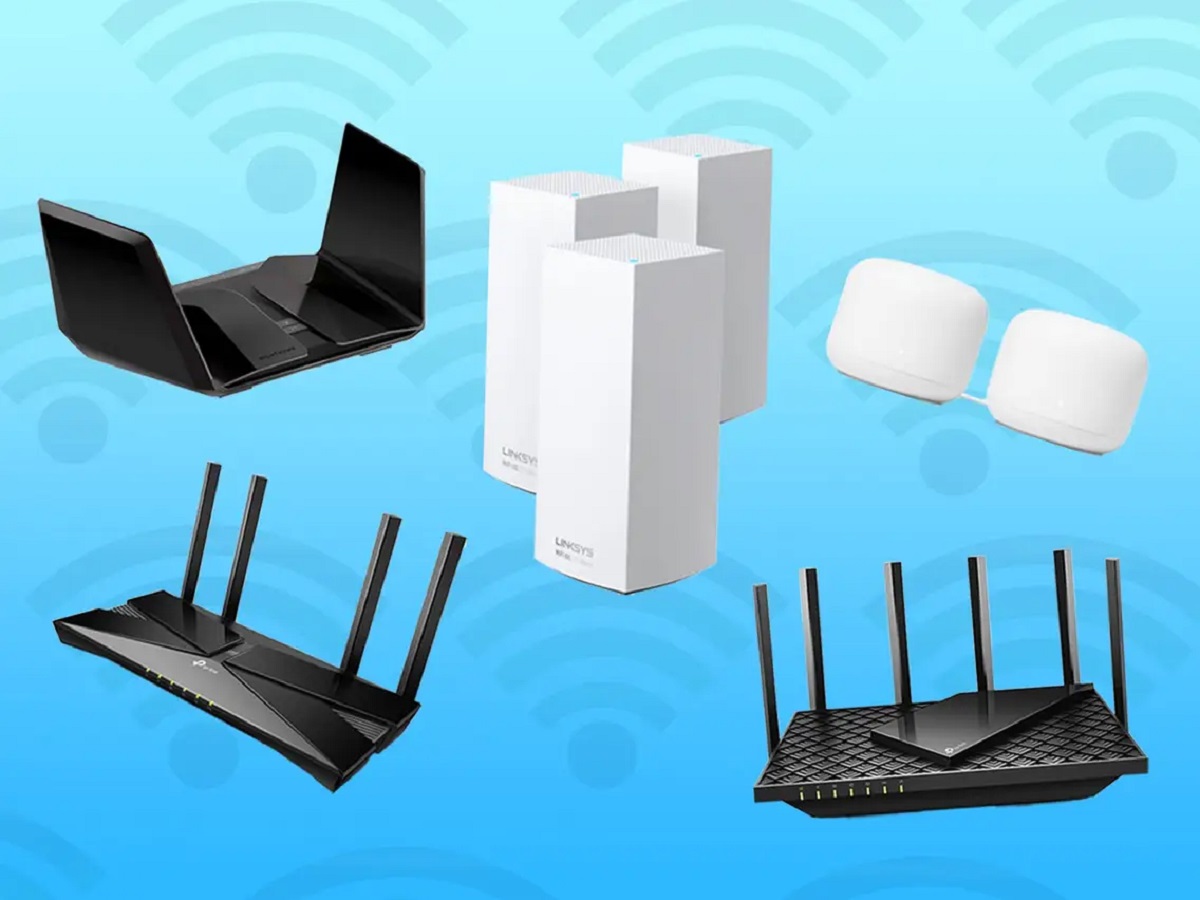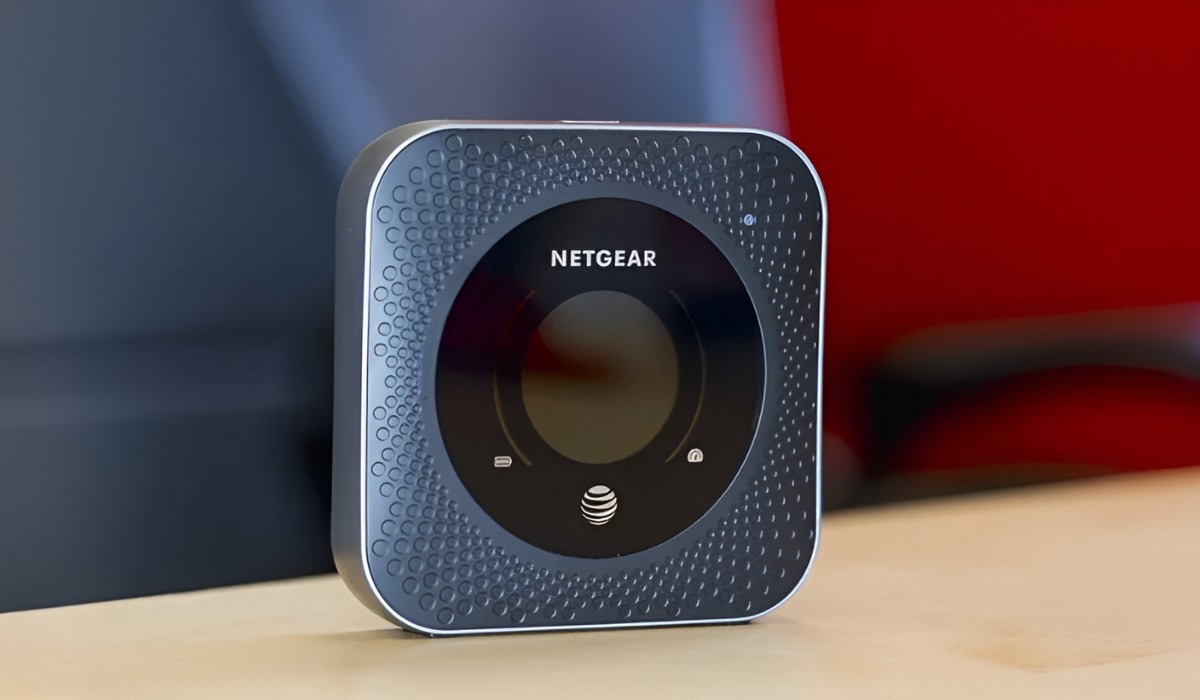Introduction
Welcome to the world of wireless connectivity! In today’s fast-paced and digitally-driven society, having a reliable and secure wireless network is crucial for both personal and professional use. Whether you’re a business owner looking to provide seamless internet access to your employees and customers or a homeowner wanting to enjoy uninterrupted online activities, a wireless access point is the key to a high-performing network.
But what exactly is a wireless access point? How does it work? And why is it essential for your network setup? In this article, we will explore the ins and outs of wireless access points, their various types, the features to consider, and the benefits they offer. So, let’s dive in and discover more about this important networking component.
A wireless access point, often abbreviated as WAP or AP, is a device that connects wireless-enabled devices, such as laptops, smartphones, and tablets, to a wired network, enabling them to access the internet and other network resources. It acts as a central hub for wireless communication, allowing multiple devices to connect simultaneously and transmit data wirelessly.
Unlike traditional wired networks that require physical connections to access the network, a wireless access point eliminates the need for cables and enables wireless devices within its range to connect and communicate. This wireless connectivity offers convenience, flexibility, and mobility, making it ideal for environments where wired connections are impractical or not feasible.
So how does a wireless access point work? When a wireless-enabled device, such as a laptop or smartphone, comes within the range of a wireless access point, it detects the presence of the access point and establishes a wireless connection. This connection is facilitated through radio waves, which are transmitted and received by the wireless access point and the wireless device.
The wireless access point acts as a bridge between the wireless device and the wired network infrastructure. It receives data packets from the wireless device and converts them into a format that can be transmitted over the wired network, allowing the wireless device to access network resources and the internet. Similarly, it receives data packets from the wired network and converts them into a format that can be transmitted wirelessly to the connected devices.
What is a Wireless Access Point?
A wireless access point, also known as a WAP or AP, is a networking device that allows wireless devices to connect to a wired network. It serves as a central hub for wireless communication and extends the range of a wired network, enabling wireless devices to access the internet and other network resources.
Think of a wireless access point as a bridge between wireless devices and the wired network infrastructure. It receives data packets from wireless devices and converts them into a format that can be transmitted over the wired network. Similarly, it receives data packets from the wired network and converts them into a format that can be transmitted wirelessly to the connected devices.
One of the key advantages of a wireless access point is its ability to provide wireless connectivity to multiple devices simultaneously. Whether it’s laptops, smartphones, tablets, or IoT (Internet of Things) devices, an access point can support a large number of wireless connections, allowing users to access the network and the internet from various locations within its range.
Wireless access points can be deployed in various settings, such as homes, offices, schools, hotels, cafes, and public spaces, to provide seamless and reliable wireless connectivity. They can be standalone devices or integrated into routers or network switches.
Depending on the size and requirements of a network, multiple wireless access points may be deployed to ensure extensive coverage and eliminate dead zones. These access points work together to form a wireless network, enabling users to move freely and stay connected without experiencing signal loss or dropouts.
It’s important to note that a wireless access point differs from a wireless router, although they often serve similar functions. While a wireless access point focuses on facilitating wireless connections and extending the range of an existing network, a wireless router combines the functionalities of an access point, a network switch, and a router. It acts as the central hub for both wired and wireless connections, allowing devices to connect to the internet and routing network traffic.
In summary, a wireless access point is a vital component in wireless network setups, providing wireless connectivity to devices, extending the range of a wired network, and enabling seamless communication between wireless devices and the network infrastructure.
How Does a Wireless Access Point Work?
Wireless access points (WAPs) operate on specific frequencies and use radio waves to enable wireless connectivity between devices and a wired network. The process of how a wireless access point works can be divided into two main steps: device discovery and data transmission.
Device Discovery: When a wireless-enabled device, such as a laptop or smartphone, comes within the range of a wireless access point, it detects the presence of the access point and initiates a connection request. This process is known as device discovery. The access point broadcasts a beacon signal, containing information about the network name (SSID) and security settings. The wireless device scans for available networks, identifies the access point, and associates with it by establishing a secure connection.
Data Transmission: Once the wireless device has successfully associated with the access point, it can transmit and receive data. When a user sends data from their wireless device, such as a website request or an email, the data is broken down into packets. These packets are then transmitted over the wireless connection to the access point. The access point receives the packets and forwards them to the wired network infrastructure.
On the wired network side, the access point acts as a bridge, receiving the packets from the wireless device and converting them into a format that can be transmitted over the wired network. It then transmits the packets to the appropriate destination, such as a server or router, to retrieve the requested information or carry out the required actions.
Similarly, when data is sent from the wired network to the wireless device, such as a web page or a file, the access point receives the packets from the wired network and converts them into a format that can be transmitted wirelessly. It then sends the packets over the wireless connection to the intended device. The wireless device receives the packets and reconstructs the data, allowing the user to access the requested information.
Throughout this process, communication between the wireless device and the access point occurs via radio waves. The access point contains one or more antennas that transmit and receive these radio waves. The strength and range of these radio waves depend on various factors, including the type of wireless access point, the wireless standard being used (such as 802.11ac or 802.11ax), as well as environmental conditions.
Overall, a wireless access point acts as a bridge between wireless devices and the wired network infrastructure, facilitating device discovery and data transmission, and enabling seamless wireless connectivity and communication.
Types of Wireless Access Points
Wireless access points (WAPs) come in various types, each with its own features and capabilities. Understanding the different types of wireless access points can help you choose the best option for your specific networking needs. The common types of wireless access points include:
- Standalone Access Points: Standalone access points are independent devices that are solely dedicated to providing wireless connectivity. They are typically used in small to medium-sized environments where a single access point is sufficient to cover the desired area. Standalone access points offer flexibility in terms of placement and management, allowing for easy installation and configuration.
- Controller-Based Access Points: Controller-based access points, also known as managed access points, require a dedicated controller to manage and control multiple access points in a network. The controller provides centralized management, configuration, and monitoring of the access points. This type of access point is commonly used in larger networks where multiple access points are required for extensive coverage. Controller-based access points offer seamless roaming and provide enhanced security and performance.
- Cloud-Managed Access Points: Cloud-managed access points are a relatively newer type of access point that leverages cloud-based management and configuration. These access points are managed through a cloud-based controller or management platform, eliminating the need for on-premises hardware. Cloud-managed access points offer remote management capabilities, allowing administrators to efficiently manage and monitor multiple access points across various locations from a central dashboard. They are ideal for distributed networks and organizations with limited IT resources.
- Wireless Mesh Access Points: Wireless mesh access points are designed to create a mesh network by connecting multiple access points in a self-configuring and self-healing manner. These access points communicate with each other to extend wireless coverage and eliminate dead zones. Wireless mesh access points are beneficial in large outdoor areas, such as campuses or warehouses, where running Ethernet cables for each access point is not feasible. They provide a scalable and flexible solution for extending wireless connectivity across vast areas.
- Indoor and Outdoor Access Points: Access points are also categorized based on their installation environment. Indoor access points are designed for deployment in indoor settings, such as offices, homes, and retail stores. They prioritize coverage and performance, offering features like dual-band operation, multiple antennas, and fast data transfer rates. On the other hand, outdoor access points are built to withstand harsh weather conditions and provide wireless coverage in outdoor spaces. They are equipped with weatherproof enclosures and offer extended-range capabilities, making them suitable for outdoor events, campuses, and public spaces.
It’s important to evaluate your specific requirements, network size, budget, and deployment environment when selecting the most suitable type of wireless access point for your needs. Each type has its own advantages and considerations, so take the time to assess your needs and consult with networking professionals if needed.
Features to Consider in a Wireless Access Point
When choosing a wireless access point (WAP) for your network, it’s important to consider various features that can affect its performance, security, and usability. Understanding these features will help you make an informed decision and select an access point that meets your specific requirements. Here are some key features to consider:
- Wireless Standards: Ensure that the access point supports the latest wireless standards, such as 802.11ac or 802.11ax. These standards provide faster speeds, improved performance, and enhanced security compared to older standards. Choose an access point that aligns with your network’s requirements and compatible with your wireless devices.
- Wireless Bands: Consider the number of wireless bands supported by the access point. Dual-band access points operate on both the 2.4GHz and 5GHz frequency bands, providing flexibility in terms of device compatibility and network capacity. Tri-band access points add an extra 5GHz band, enabling better performance and reduced congestion in high-density environments.
- Data Transfer Rates: Look for an access point that offers fast data transfer rates. Higher data transfer rates ensure smooth and uninterrupted performance, especially for bandwidth-intensive activities like streaming and online gaming. Consider access points that support technologies like MU-MIMO (Multi-User Multiple-Input Multiple-Output) for improved simultaneous data transmission to multiple devices.
- Security Features: Security is crucial when it comes to wireless networks. Ensure that the access point supports the latest encryption protocols, such as WPA3, to protect your network from unauthorized access. Look for features like guest network support, VLAN (Virtual Local Area Network) capabilities, and firewall options for enhanced network security.
- Power over Ethernet (PoE) Support: PoE allows the access point to receive both power and data over a single Ethernet cable. PoE support eliminates the need for additional power cables and simplifies installation, especially in locations where power outlets are limited.
- Management and Monitoring: Consider the management and monitoring options available for the access point. Some access points offer user-friendly web interfaces, while others provide dedicated management software. Cloud management can provide remote access and centralized control over multiple access points. Look for features like real-time monitoring, firmware updates, and advanced configuration options.
- Scalability: If you anticipate future network expansion or increased user demands, consider access points that offer scalability. Look for features like seamless roaming, which allows wireless devices to switch between access points without losing connectivity, and the ability to add more access points to the network as needed.
- Antenna Configuration: The antenna configuration of the access point can impact signal strength and coverage. Consider access points with adjustable or detachable antennas, as they offer flexibility in optimizing signal strength and coverage in different environments.
These are just a few key features to consider when selecting a wireless access point. It’s important to assess your specific network requirements, budget, and future scalability needs before making a decision. Consulting with networking professionals can also be helpful in identifying the best access point options for your specific environment.
Benefits of Using a Wireless Access Point
In today’s connected world, wireless access points (WAPs) offer numerous benefits for both individuals and businesses. These benefits range from convenience and flexibility to improved productivity and cost savings. Let’s explore some of the key advantages of using a wireless access point:
- Wireless Connectivity: The primary benefit of using a wireless access point is the ability to connect devices wirelessly. Whether it’s laptops, smartphones, tablets, or IoT devices, a wireless access point allows users to access the network and the internet without the need for physical connections. This wireless connectivity eliminates the hassle and limitations of wired connections, providing convenience and flexibility in accessing network resources.
- Mobility and Flexibility: With a wireless access point, users can connect to the network and access resources from anywhere within the access point’s coverage range. This mobility and flexibility enable users to move freely within their workspace, enhancing productivity and collaboration. It is particularly beneficial in environments like offices, warehouses, and public spaces where mobility is essential.
- Scalability: Wireless access points allow for easy network expansion. Additional access points can be deployed to extend coverage and accommodate increasing device connections without the need for extensive cabling. This scalability is particularly advantageous for businesses that anticipate growth or have dynamic network requirements.
- Improved Productivity: Wireless access points enable employees to access the network and internet resources conveniently from wherever they are within the coverage area. This accessibility enhances productivity as employees can collaborate, communicate, and access necessary information without being tied to a particular location. It also facilitates the use of mobile devices, enabling employees to work on the go and stay productive.
- Reduced Cabling Costs: In a traditional wired network setup, extensive cabling is required to connect devices to the network. With wireless access points, the need for physical cables is significantly reduced or eliminated, resulting in cost savings on cabling infrastructure. It also eliminates the constraints and costs associated with cable installation, making it a more flexible and cost-effective networking solution.
- Seamless Roaming: Wireless access points that support seamless roaming provide uninterrupted connectivity for devices as they move between different access point coverage areas. This feature is particularly useful in environments with multiple access points, such as large offices or public spaces. Seamless roaming ensures device connections are maintained without disruptions, enhancing user experience and productivity.
- Guest Network Support: Wireless access points often offer guest network functionality, allowing businesses to provide separate network access for visitors without compromising the security of the main network. This feature enables businesses to offer internet connectivity to guests, customers, or clients while keeping their primary network secure and isolated.
- Centralized Management: Wireless access points that can be centrally managed provide simplified administration and monitoring. Centralized management allows network administrators to configure access points, apply security policies, monitor network performance, and handle firmware updates from a single management interface. This centralized control streamlines network management tasks and saves time and effort.
These are just a few of the many benefits of using a wireless access point. From seamless wireless connectivity to enhanced productivity and cost savings, wireless access points have become an essential component of modern networks for both personal and professional use.
Setting Up a Wireless Access Point
Setting up a wireless access point (WAP) requires proper planning and configuration to ensure optimal performance and security. Here are the steps to set up a wireless access point:
- Choose the Right Location: Select a central location for your access point that maximizes coverage and minimizes interference. Avoid placing the access point near objects that can obstruct the signal, such as walls, metal objects, and electronic devices.
- Connect the Access Point: Connect the access point to a power source using the provided power adapter. If the access point supports Power over Ethernet (PoE), you can also connect it to a PoE-enabled network switch using an Ethernet cable, which will provide both power and data connectivity.
- Access the Configuration Interface: Connect a computer or laptop to the access point using an Ethernet cable or via a wireless connection. Open a web browser and enter the default IP address of the access point to access its configuration interface. You may need to refer to the user manual or manufacturer’s website for the default IP address, username, and password.
- Configure Network Settings: In the access point’s configuration interface, set a unique network name (SSID) for your wireless network. Choose a strong password and encryption method to secure the network. You can also assign a static IP address or enable DHCP (Dynamic Host Configuration Protocol) to automatically assign IP addresses to connected devices.
- Adjust Wireless Settings: Configure wireless settings such as the wireless channel, transmission power, and wireless mode (e.g., 802.11n or 802.11ac) based on your network requirements. Optimize these settings to avoid interference from neighboring networks and ensure stable and high-performance wireless connectivity.
- Additional Configuration: Depending on your network setup, you may need to configure additional settings such as VLANs, guest networks, quality of service (QoS), and port forwarding. These settings help enhance security, prioritize network traffic, and enable specific functionalities based on your needs.
- Test and Troubleshoot: After configuring the access point, test the wireless connection by connecting to the network from a wireless device. Verify if the wireless signal is strong and the internet connection is stable. If any issues arise, check the access point’s configuration, positioning, and wireless settings to troubleshoot the problem.
- Expand Your Network: If you require extended coverage, you can add additional access points strategically placed to extend the wireless network. Ensure that each access point has its own unique network name and operates on a different wireless channel to avoid interference.
It’s important to note that the specific steps and configuration options may vary depending on the make and model of the wireless access point. Always refer to the manufacturer’s documentation or user manual for detailed instructions tailored to your specific device.
By following these steps and configuring your wireless access point correctly, you can enjoy seamless wireless connectivity, enhanced network performance, and secure access to your network resources.
Troubleshooting Common Issues with a Wireless Access Point
A wireless access point (WAP) is a reliable device for wireless connectivity, but like any technology, it can experience issues. Understanding and troubleshooting common problems can help you quickly resolve issues and restore optimal performance. Here are some common issues you may encounter with a wireless access point and how to troubleshoot them:
- Weak or No Signal: If you’re experiencing weak or no wireless signal, check the access point’s positioning. Ensure it is placed in a central location within its coverage area, away from obstructions and interference sources. Consider using additional access points for extended coverage in larger areas.
- Interference: Wireless networks can be affected by interference from neighboring networks or electronic devices. Change the wireless channel on your access point to one with less interference. You can use Wi-Fi analyzer tools or apps to identify the least congested channel in your area and adjust your access point’s settings accordingly.
- Slow or Intermittent Connectivity: Slow or intermittent wireless connectivity can be caused by several factors. Check for firmware updates for your access point and ensure they are up to date. Additionally, limit the number of connected devices, as overcrowding can impact performance. Consider adjusting the transmission power, wireless mode, or QoS settings to optimize performance.
- Authentication or Password Issues: If you’re unable to connect to the wireless network, double-check the network name (SSID) and password. Ensure that the password is correct and entered correctly, as they are case-sensitive. If necessary, try forgetting the network on your device and reconnecting again.
- Unstable Connection or Drops: If your wireless connection is unstable or frequently drops, it may be due to issues with interference or signal strength. Adjust the access point’s positioning or consider adding additional access points for better coverage. Keep in mind that distance, physical obstructions, and electronic devices can affect the stability of the wireless signal.
- Network Congestion: A high number of connected devices or bandwidth-intensive activities can result in network congestion. Ensure that your access point supports technologies like MU-MIMO (Multi-User Multiple-Input Multiple-Output) to handle simultaneous connections efficiently. Consider prioritizing network traffic using QoS (Quality of Service) settings to optimize performance for specific devices or applications.
- Security Concerns: If you suspect unauthorized access to your network or security concerns, ensure that your access point uses strong encryption, such as WPA3, for secure connections. Change the default username and password for accessing the access point’s configuration interface. Regularly update the firmware to address security vulnerabilities and enable features like guest networks or VLANs to isolate devices.
- Power or Hardware Issues: If the access point is not powering on or experiencing hardware malfunctions, check if the power adapter is properly connected and supplying power. If using a PoE (Power over Ethernet) setup, ensure that the network switch or PoE injector is functioning correctly. If the issue persists, consider contacting technical support or replacing the access point.
If you encounter persistent issues with your wireless access point that you cannot resolve through troubleshooting, it may be helpful to consult the manufacturer’s documentation, seek technical assistance, or consider upgrading to a newer or more advanced model.
By familiarizing yourself with these common troubleshooting techniques, you can quickly identify and address issues with your wireless access point, ensuring a reliable and stable wireless network connection.
Conclusion
Wireless access points play a crucial role in enabling wireless connectivity, extending network coverage, and enhancing productivity in both personal and professional environments. They provide convenience, flexibility, and scalability, allowing users to connect to the internet and access network resources without the need for physical connections.
Throughout this article, we have explored the concept of wireless access points, how they work, different types available, and the features and benefits they offer. We have also discussed the process of setting up a wireless access point and troubleshooting common issues that may arise.
By understanding the functionality and capabilities of wireless access points, you can make informed decisions when selecting the right access point for your specific networking needs. Whether you need a standalone access point for a small office or a cloud-managed access point for a large-scale distributed network, there are options available to suit your requirements.
Remember to consider features such as wireless standards, data transfer rates, security capabilities, and management options when choosing a wireless access point. Proper positioning, configuration, and troubleshooting techniques can ensure a stable and reliable wireless connection. However, if you encounter persistent issues, it may be necessary to seek technical assistance or consult the manufacturer’s documentation for further support.
Wireless access points continue to evolve, with advancements in wireless technologies, security protocols, and management capabilities. Staying up to date with the latest trends and industry advancements can help you make the most of your wireless network and adapt to changing needs and demands.
In conclusion, wireless access points have revolutionized the way we connect and communicate. They provide the vital link between wireless devices and wired networks, offering seamless wireless connectivity and enhancing productivity in various settings. Understanding their features, benefits, and troubleshooting strategies will enable you to build and maintain an efficient and reliable wireless network environment.









